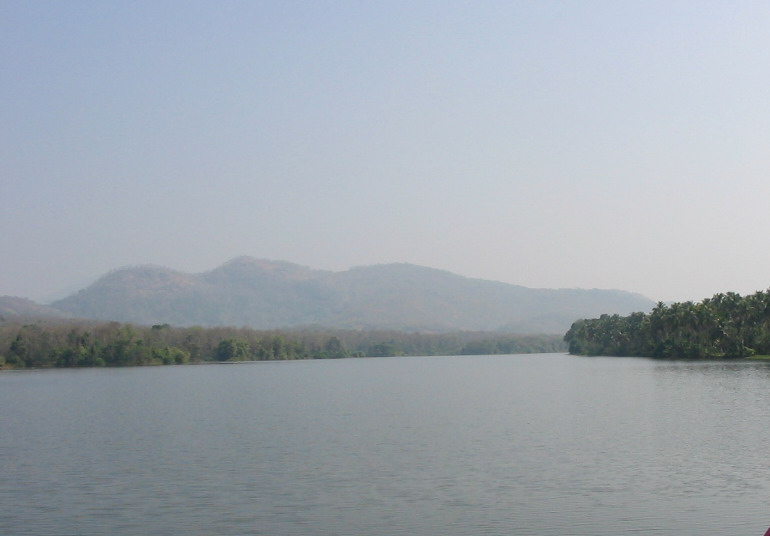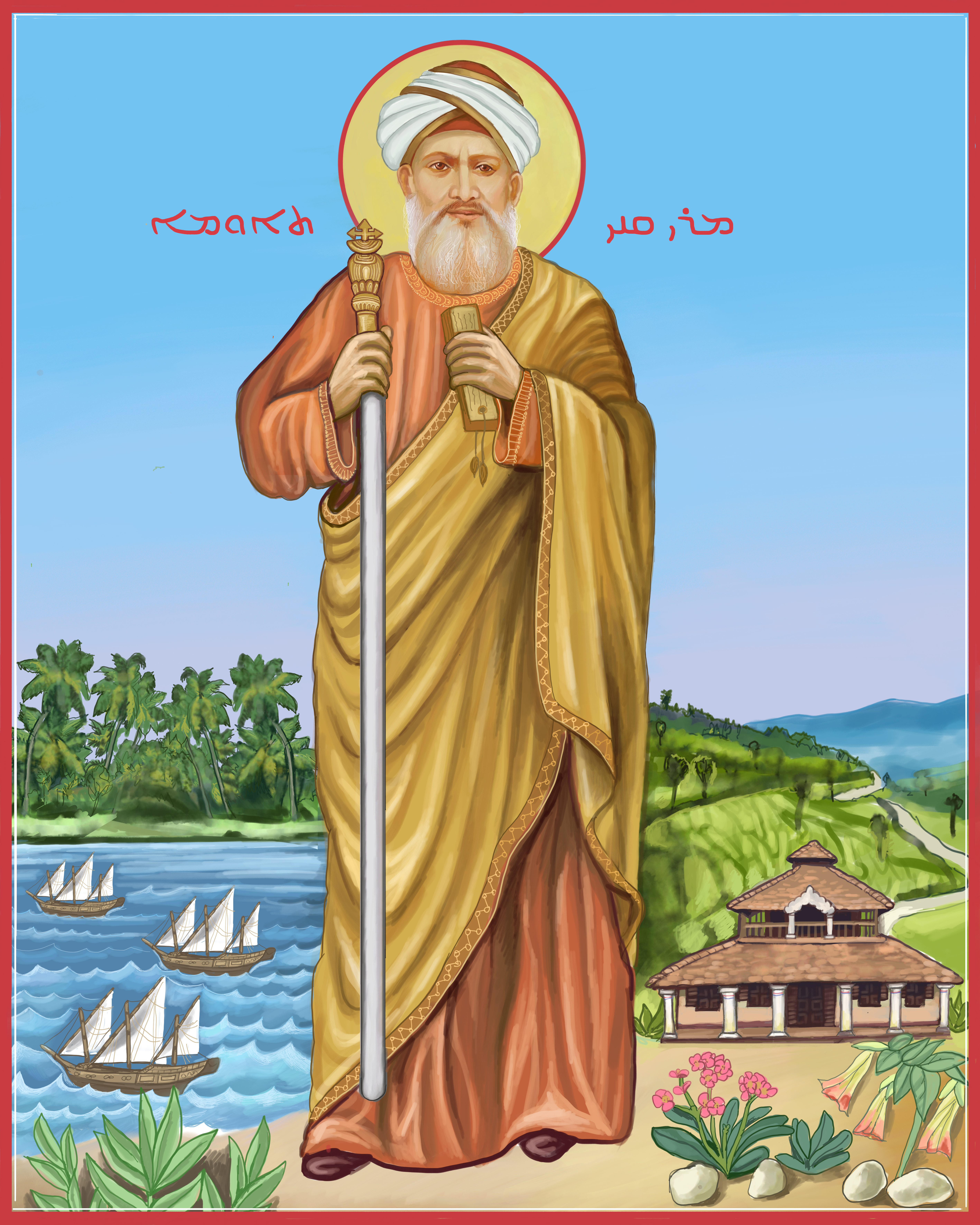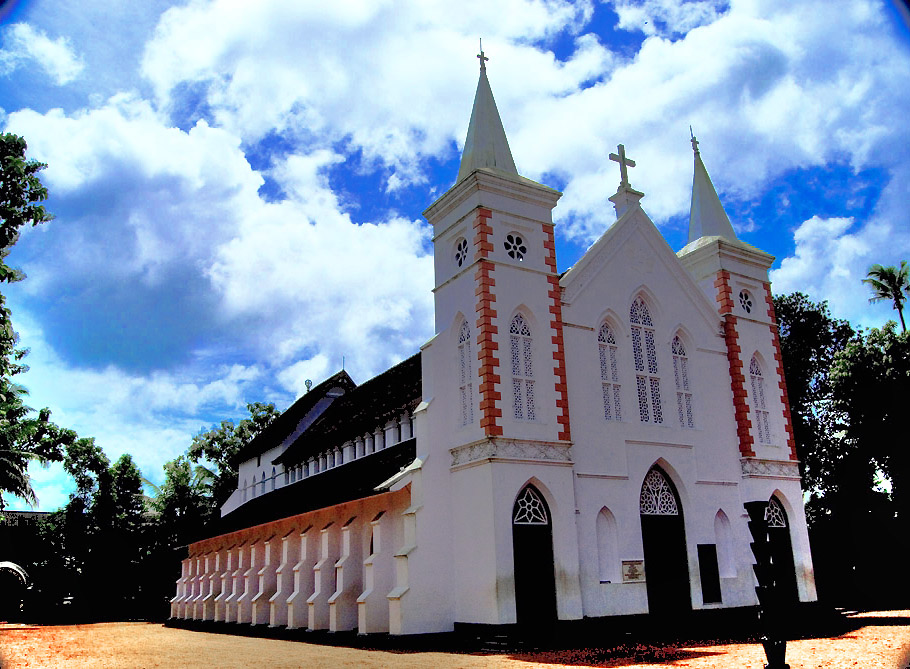|
Malayatoor
The St Thomas Syro Malabar Catholic International Shrine, Malayattoor (or Malayatoor Church) is one of the eight international shrines in the world, situated in Malayattoor Angamaly, Ernakulam district of Kerala, India. The Malayatoor Church attracts many devotees from not just India, but from all over the world. The church is associated with the evangelisation activity of St. Thomas the Apostle in Kerala. The church has been designated by the Vatican as one of the eight International shrines in the world. It is believed that St. Thomas held prayer at the place where the church is situated when he landed in Kerala. The hilltop church is located 15 km away from the town of Kalady. Malayatoor and Kodanad villages are located on the opposite banks of the Periyar river with unspoiled and rustic views of the surroundings. History St. Thomas is believed to have landed at Kodungallur (Cranganore) in Kerala in AD 52. In AD 62, St. Thomas returns to Malankara coast via Malayatur w ... [...More Info...] [...Related Items...] OR: [Wikipedia] [Google] [Baidu] |
Malayattoor
Malayattoor is a village in Aluva thaluk . It is situated around 15 km (9 mi) north-east of Angamaly in Ernakulam District in the state of Kerala in South India. The name `Malayattoor' is an amalgamation of three small words. Mala (Mountain) Arr (River) Oore (Place). This is to say, Malayattoor is a meeting place of mountain, river, and land. Location Located 52 km from Kochi, the Malayatoor Church is situated atop the 609 m high Malayatoor Hill. The church is dedicated to St. Thomas, who is believed to have prayed at this shrine. One of the most important Christian pilgrim centres in Kerala, this holy shrine attracts devotees in very large numbers not only from Kerala but also from the neighbouring states. This famous church is situated at Kurisumudi, a verdant hill in the Western Ghats girdled partially by the Periyar (river). The Church has a life-size statue of St. Thomas and the imprint of the feet of the Apostle on a rock. This shrine has now been ... [...More Info...] [...Related Items...] OR: [Wikipedia] [Google] [Baidu] |
Angamaly
Angamaly (''Aṅkamāli''), , Malayalam : അങ്കമാലി Situated about north of the city centre, the town lies at the intersection of Main Central Road (MC Road) and National Highway 544. MC Road, which starts from Thiruvananthapuram ends at Angamaly at its intersection with NH 544. Cochin International Airport is less than 10KM away from the town of Angamaly. Originally established as a ''panchayat'' in May 1952, Angamaly became a municipality in April 1978 and is also a Legislative Assembly constituency from 1965 in the Ernakulam district. The area is known for the Angamaly police firing in 1959, when police opened fire on protesters who had been demonstrating against Kerala's communist government. Angamaly is one of the ancient Christian centres of Kerala. There are eighteen and half "Sharries" around Angamaly and there is a history of Buddhist monks in the area. Nayathode near Angamaly is the birth place of Great poet G. Sankara Kurup, (3 June 1901 � ... [...More Info...] [...Related Items...] OR: [Wikipedia] [Google] [Baidu] |
Kodanad
Kodanad is a rural riverside village of Ernakulam district in Kerala, South India. It is 18 km from Angamaly. Kodanad is situated on the south bank of Periyar river, about 42 kilometers east of Kochi. The village is a major tourist destination because it houses an Elephant training center. Location Transportation Kodanad has got private bus services to places inside and outside Ernakulam District and run into several neighbouring towns. There are frequent bus services to Perumbavoor from here. AutoRickshaws are commonly used for small distances. The nearest railway stations are Angamaly and Aluva. The Cochin International Airport at Nedumbassery is only 16 km from the Kodanad Elephant training centre. KL-40 is the RTO code for Kunnathunad Taluk and Perumbavoor. Perumbavoor JRTO is at Pattal. Kodanad is surrounded by many small but populous commuter villages, notably Koovappady, Thottuva, Alattuchira, Panamkuzhy, Cheranalloor, Kurichilakode, Kaprikad, etc. Vallam t ... [...More Info...] [...Related Items...] OR: [Wikipedia] [Google] [Baidu] |
Periyar River
Periyar, , (meaning: ''big river'') is the longest river and the river with the largest discharge potential in the Indian state of Kerala. It is one of the few perennial rivers in the region and provides drinking water for several major towns. The Periyar is of utmost significance to the economy of Kerala. It generates a significant proportion of Kerala's electrical power via the Idukki Dam and flows along a region of industrial and commercial activity. The river also provides water for irrigation and domestic use throughout its course besides supporting a rich fishery. Due to these reasons, the river has been named the "Lifeline of Kerala". Kochi city, in the vicinity of the river mouth draws its water supply from Aluva, an upstream site sufficiently free of seawater intrusion. Twenty five percent of Kerala's industries are along the banks of river Periyar. These are mostly crowded within a stretch of in the Eloor-Edayar region (Udhyogamandal), about north of Kochi harbo ... [...More Info...] [...Related Items...] OR: [Wikipedia] [Google] [Baidu] |
Syriac Christianity
Syriac Christianity ( syr, ܡܫܝܚܝܘܬܐ ܣܘܪܝܝܬܐ / ''Mšiḥoyuṯo Suryoyto'' or ''Mšiḥāyūṯā Suryāytā'') is a distinctive branch of Eastern Christianity, whose formative theological writings and traditional liturgies are expressed in the Classical Syriac language, a variation of the Aramaic language. In a wider sense, the term can also refer to Aramaic Christianity in general, thus encompassing all Christian traditions that are based on liturgical uses of Aramaic language and its variations, both historical and modern. Along with Greek and Latin, Classical Syriac was one of the three most important languages of Early Christianity. It became a vessel for the development of a distinctive Syriac form of Christianity which flourished throughout the Near East and other parts of Asia during Late Antiquity and the Early Medieval period, giving rise to various liturgical and denominational traditions, represented in modern times by several Churches which contin ... [...More Info...] [...Related Items...] OR: [Wikipedia] [Google] [Baidu] |
Saint Thomas Christian Churches
The Saint Thomas Christians, also called Syrian Christians of India, ''Marthoma Suriyani Nasrani'', ''Malankara Nasrani'', or ''Nasrani Mappila'', are an ethno-religious community of Indian Christians in the state of Kerala (Malabar region), who, for the most part, employ the Eastern and Western liturgical rites of Syriac Christianity. They trace their origins to the evangelistic activity of Thomas the Apostle in the 1st century. The Saint Thomas Christians had been historically a part of the hierarchy of the Church of the East but are now divided into several different Eastern Catholic, Oriental Orthodox, Protestant, and independent bodies, each with their own liturgies and traditions. They are Malayalis and speak Malayalam. ''Nasrani'' or Nazarene is a Syriac term for Christians, who were among the first converts to Christianity in the Near East. Historically, this community was organised as the Province of India of the Church of the East by Patriarch Timothy I (780–8 ... [...More Info...] [...Related Items...] OR: [Wikipedia] [Google] [Baidu] |
Saint Thomas Christians
The Saint Thomas Christians, also called Syrian Christians of India, ''Marthoma Suriyani Nasrani'', ''Malankara Nasrani'', or ''Nasrani Mappila'', are an ethno-religious community of Indian Christians in the state of Kerala ( Malabar region), who, for the most part, employ the Eastern and Western liturgical rites of Syriac Christianity. They trace their origins to the evangelistic activity of Thomas the Apostle in the 1st century. The Saint Thomas Christians had been historically a part of the hierarchy of the Church of the East but are now divided into several different Eastern Catholic, Oriental Orthodox, Protestant, and independent bodies, each with their own liturgies and traditions. They are Malayalis and speak Malayalam. ''Nasrani'' or Nazarene is a Syriac term for Christians, who were among the first converts to Christianity in the Near East. Historically, this community was organised as the Province of India of the Church of the East by Patriarch Timothy I (7 ... [...More Info...] [...Related Items...] OR: [Wikipedia] [Google] [Baidu] |
Pulpit
A pulpit is a raised stand for preachers in a Christian church. The origin of the word is the Latin ''pulpitum'' (platform or staging). The traditional pulpit is raised well above the surrounding floor for audibility and visibility, accessed by steps, with sides coming to about waist height. From the late medieval period onwards, pulpits have often had a canopy known as the sounding board, ''tester'' or ''abat-voix'' above and sometimes also behind the speaker, normally in wood. Though sometimes highly decorated, this is not purely decorative, but can have a useful acoustic effect in projecting the preacher's voice to the congregation below. Most pulpits have one or more book-stands for the preacher to rest his or her bible, notes or texts upon. The pulpit is generally reserved for clergy. This is mandated in the regulations of the Catholic Church, and several others (though not always strictly observed). Even in Welsh Nonconformism, this was felt appropriate, and in some ... [...More Info...] [...Related Items...] OR: [Wikipedia] [Google] [Baidu] |
Baptism
Baptism (from grc-x-koine, βάπτισμα, váptisma) is a form of ritual purification—a characteristic of many religions throughout time and geography. In Christianity, it is a Christian sacrament of initiation and adoption, almost invariably with the use of water. It may be performed by sprinkling or pouring water on the head, or by immersing in water either partially or completely, traditionally three times, once for each person of the Trinity. The synoptic gospel The gospels of Matthew, Mark, and Luke are referred to as the synoptic Gospels because they include many of the same stories, often in a similar sequence and in similar or sometimes identical wording. They stand in contrast to John, whose co ...s recount that John the Baptist baptism of Jesus, baptised Jesus. Baptism is considered a sacrament in most churches, and as an ordinance (Christian), ordinance in others. Baptism according to the Trinitarian formula, which is done in most mainstream C ... [...More Info...] [...Related Items...] OR: [Wikipedia] [Google] [Baidu] |
Jesus Christ
Jesus, likely from he, יֵשׁוּעַ, translit=Yēšūaʿ, label=Hebrew/Aramaic ( AD 30 or 33), also referred to as Jesus Christ or Jesus of Nazareth (among other names and titles), was a first-century Jewish preacher and religious leader; he is the central figure of Christianity, the world's largest religion. Most Christians believe he is the incarnation of God the Son and the awaited Messiah (the Christ) prophesied in the Hebrew Bible. Virtually all modern scholars of antiquity agree that Jesus existed historically. Research into the historical Jesus has yielded some uncertainty on the historical reliability of the Gospels and on how closely the Jesus portrayed in the New Testament reflects the historical Jesus, as the only detailed records of Jesus' life are contained in the Gospels. Jesus was a Galilean Jew who was circumcised, was baptized by John the Baptist, began his own ministry and was often referred to as "rabbi". Jesus debated with fellow Jew ... [...More Info...] [...Related Items...] OR: [Wikipedia] [Google] [Baidu] |
Niranam
Niranam is a village in Tiruvalla, Kerala, India. It was a port in ancient Kerala, on the confluence of the Manimala and Pamba River. It is almost 7 km from Tiruvalla SCS Junction in Pathanamthitta District of Kerala, lies to the western part of Tiruvalla, identified as Upper Kuttanad region. It Is Part Of Thiruvalla Sub-District.Also Comes Under Thiruvalla Constituency.It is identified with Nelcynda in Periplus of the Erythraean Sea. Demographics Niranam is a large village located in the west of Tiruvalla, with 2837 families residing. The population of Niranam area is 10070, average sex ratio is 1118, higher than the state average of 1084. Niranam has a high literacy rate, 96.01%, higher than the state average of 94%. History Niranam is mentioned in the writings of Pliny and ''Cosmas Indicopleustes'' as a trade centre where pepper grows and is known to have a variety of different settlers from Greeks to Aryan Jains. Geologists suggest that the sea retracted from th ... [...More Info...] [...Related Items...] OR: [Wikipedia] [Google] [Baidu] |
Kodungalloor
Kodungallur (; also Cranganore, Portuguese: Cranganor; formerly known as Mahodayapuram, Shingly, Vanchi, Muchiri, Muyirikkode, and Muziris) is a historically significant town situated on the banks of river Periyar on the Malabar Coast in Thrissur district of Kerala, India. It is north of Kochi (Cochin) by National Highway 66 and from Thrissur. Kodungallur, being a port city at the northern end of the Kerala lagoons, was a strategic entry point for the naval fleets to the extensive Kerala backwaters. As of the 2011 India Census, Kodungallur Municipality had a population of 33,935. It had an average literacy rate of 95.10%. Around 64% of the population follows Hinduism, 32% Islam and 4% Christianity. Schedule Caste (SC) constitutes 7.8% while Schedule Tribe (ST) were 0.1% of total population in Kodungallur. Kodungallur is the headquarters of the Kodungallur sub-district (tehsil) in Thrissur district. Kodungallur Kerala Legislative Assembly constituency is a part of Chala ... [...More Info...] [...Related Items...] OR: [Wikipedia] [Google] [Baidu] |







